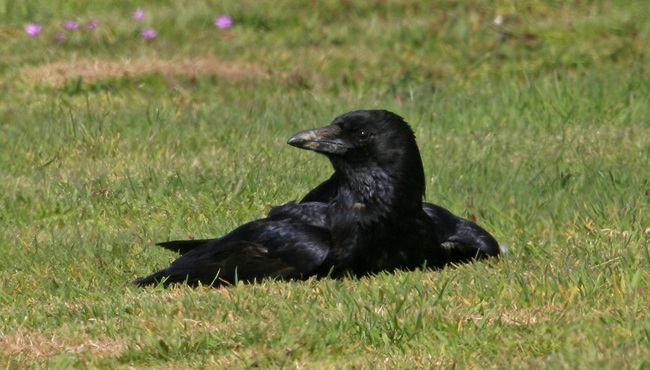Dec 23, 2025
Dec 23, 2025
What if the solution to your biggest problem is already crawling at your feet? What if the resource you are searching for is not missing at all — it is disguised as the very nuisance you want to eliminate? And what if the most efficient innovations do not come from boardrooms or billion-dollar labs, but from the quiet, persistent wisdom of nature itself?
In the wild, there is no user manual, no consultant, no government bailout. There is only adaptation — a relentless, elegant process that turns survival into an art form.

Consider the crow. When unwell or infested with parasites, it doesn’t search for a veterinarian or wait for the problem to pass. Instead, it deliberately seeks out a patch of ants.
The Crow’s Spa
The bird spreads its wings and allows the ants to swarm over its feathers. On the surface, it looks absurd — inviting more irritation while already unwell. But the crow understands what it is doing.
Ants release formic acid, a natural antimicrobial and antiparasitic compound. For the crow, it is an all-inclusive spa treatment: killing mites, neutralizing fungi, and sterilizing bacteria — all without spending energy or exposing itself to new risks.
This behavior, known as anting, transforms a potential pest into a partner. What could have been another layer of discomfort becomes the very cure the crow needed.
From Nature to Industry: The Same Playbook
The brilliance here is not just in biology — it is in mindset. The crow does not discard the problem; it reframes it. In doing so, it turns scarcity into abundance.
Human industry, at its most resourceful, operates on the same principle:
Each example is the human version of “anting” — using the very byproduct of a challenge as the material for its solution.
Anting: Nature’s Blueprint for Turning Problems into Resources
| Problem | Nature's Solution (Crow) | Industrial Parallel |
| Parasites, mites, fungi | Crow engages in 'anting' — it deliberately lets ants crawl over its feathers. The ants release formic acid, a natural antimicrobial and antiparasitic agent, killing mites, fungi, and bacteria. | Flare gas is captured and converted to LNG or methanol instead of being burned off, turning waste into a valuable product. |
| Potential irritants (Ants themselves) |
Transforms ants from a nuisance into a remedy, reframing irritation as a form of treatment | CO2 is captured and repurposed as a raw material for fuels, building materials, or synthetic proteins |
| Energy cost of seeking treatment |
Uses freely available ants; no extra resource use or external intervention required. | Produced water from oil and gas extraction is treated and reused for agriculture or industrial purposes. |
| Byproduct of a challenge | Ants’ natural defense chemicals become a health advantage for the crow | Waste heat from industrial processes is harnessed to generate power. |
The Hidden Resource Mindset
The common thread is not technology, but perspective. Problems are not inherently negative; they are concentrated forms of unused value. The challenge is learning to extract that value without depleting more resources in the process.
Nature never wastes. It never designs a process that doesn’t serve multiple functions. The crow’s ants are medicine, but they are also cleaning agents and defensive allies.
Why This Matters Now
In a century defined by resource strain, climate urgency, and economic volatility, “anting” should be more than a quirky avian fact — it should be a strategy manual. The companies, cities, and nations that thrive will be those that look at their problems and ask: Where is the hidden asset here?
Because whether it is a crow in the forest or a CEO in a skyscraper, survival belongs to those who refuse to see problems as dead ends — and instead see them as disguised opportunities.
So, the next time you encounter a stubborn obstacle, will you waste time swatting away the “ants” in your life, or will you spread your wings and let them do their work? The answer might determine whether you merely endure your problems… or transform them into your greatest resource.
Image (c) istock.com
20-Sep-2025
More by : P. Mohan Chandran